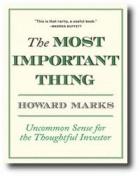“The first law of capital allocation – whether the money is slated for acquisitions or share repurchases – is that what is smart at one price is dumb at another.” - Warren Buffett
When it comes to distributing surplus profits to shareholders, management teams typically have two options – they can either pay dividends or they can buyback the company’s own stock. Deciding between the two, or indeed pursuing both, is a subject that companies can easily get wrong and one which frequently causes disagreements among investors and analysts alike.
Dividends and buybacks are ultimately designed to do similar things – reward shareholders with either a cash payment or a repurchase of stock (either via a tender offer or in the open market) which should enhance future earnings per share (EPS). In the case of dividends, where a company will typically explain its policy and then attempt to execute it, the process is very straightforward. By comparison, buybacks are rather more complicated because there are a number of variables that can influence their effectiveness and overall success (or otherwise).
A flexible way of distributing cash
On paper, a share buyback enables a company with excess cash to increase its EPS simply by buying up its own stock and reducing the number of its shares in issue. Because this has the effect of spreading the company’s profits between fewer shares, the theory is that the share price should also rise accordingly. As opposed to dividends, which generally require a long-term commitment to distributing surplus profits, buybacks can be introduced with more flexibility (subject to prior shareholder consent) and then carried out as the company sees fit.
Not only is this proving to be a popular option for companies, it has also been found to be effective. A 2002 report by Steven Young and Dennis Oswald, noted that between 1995 and 2000, the aggregate value of buybacks in the UK increased by more than 600 percent – and in the 12 months to December 2000 UK firms returned £8.9 billion to shareholders. The team argued that buybacks were drive by four factors, including: a desire to (i) distribute excess cash, (ii) counteract market under-pricing caused by high information asymmetries, (iii) maintain an efficient capital structure and hence minimise the cost of capital, and (iv) increase future earnings per share.
That research concluded that well-governed…


.png)





